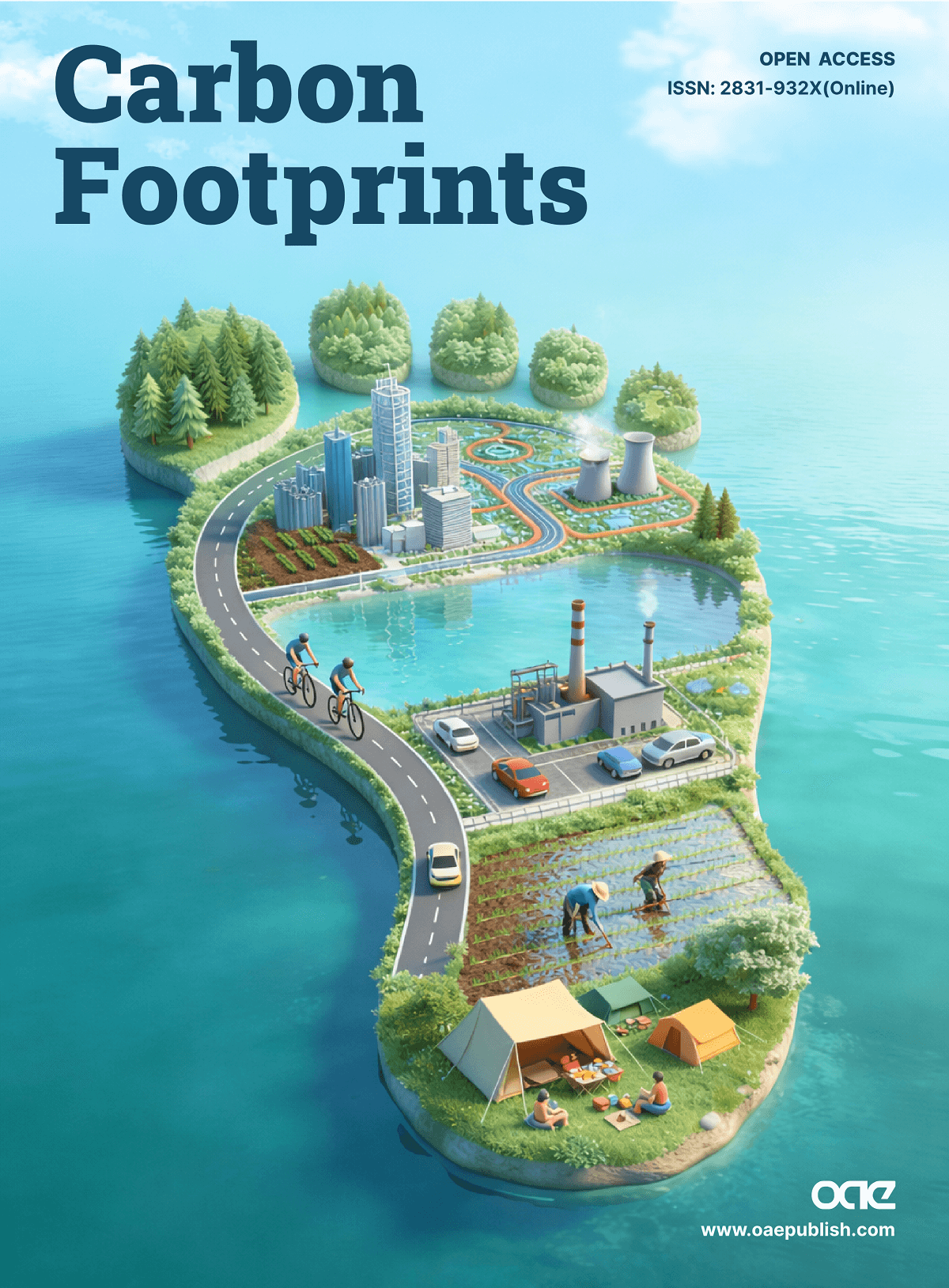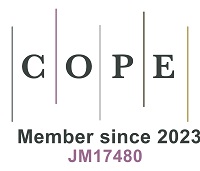REFERENCES
1. Anderson, R.; Bayer, P. E.; Edwards, D. Climate change and the need for agricultural adaptation. Curr. Opin. Plant. Biol. 2020, 56, 197-202.
2. Denning, G. Sustainable intensification of agriculture: the foundation for universal food security. npj. Sustain. Agric. 2025, 3, 47.
3. Fan, C.; Li, B.; Xiong, Z. Nitrification inhibitors mitigated reactive gaseous nitrogen intensity in intensive vegetable soils from China. Sci. Total. Environ. 2018, 612, 480-9.
4. Kopittke, P. M.; Menzies, N. W.; Wang, P.; Mckenna, B. A.; Lombi, E. Soil and the intensification of agriculture for global food security. Environ. Int. 2019, 132, 105078.
5. Cheng, K.; Yan, M.; Nayak, D.; et al. Carbon footprint of crop production in China: an analysis of National Statistics data. J. Agric. Sci. 2015, 153, 422-31.
6. Zhang, W. F.; Dou, Z. X.; He, P.; et al. New technologies reduce greenhouse gas emissions from nitrogenous fertilizer in China. Proc. Natl. Acad. Sci. U. S. A. 2013, 110, 8375-80.
7. Zhou, J.; Li, B.; Xia, L.; Fan, C.; Xiong, Z. Organic-substitute strategies reduced carbon and reactive nitrogen footprints and gained net ecosystem economic benefit for intensive vegetable production. J. Clean. Prod. 2019, 225, 984-94.
8. Yu, Z.; Yang, Y. Carbon footprint of global cotton production. Resour. Environ. Sustain. 2025, 20, 100214.
9. Abdo, A. I.; Sun, D.; Yang, K.; et al. Carbon footprint of synthetic nitrogen under staple crops: a first cradle-to-grave analysis. Glob. Change. Biol. 2024, 30, e17277.
10. Bian, Y.; Yang, P.; Long, H.; Ding, Y.; Li, D. Water use efficiency and nutrient absorption of spinach (Spinacia oleracea L.)under two material emitters and negative water supply pressures. J. Plant. Nutr. Fertil. 2018, 24, 507-18. https://www.plantnutrifert.org/article/doi/10.11674/zwyf.17171 (accessed 2025-08-27).
11. Long, H.; Zhang, H.; Yue, X.; Zhang, R. Design and experiment of heavy liquid-type negative pressure valve used for negative pressure irrigation. Trans. Chin. Soc. Agric. Eng. , 2018, 34:85-92. https://iarrp.caas.cn/en/docs/2021-07/20210716104554533416.pdf (accessed 2025-08-27).
12. Nalliah, V.; Ranjan, R. S. Evaluation of a capillary-irrigation system for better yield and quality of hot pepper (Capsicum annuum). Appl. Eng. Agric. 2010, 26, 807-16.
13. Yang, P.; Bai, J.; Yang, M.; et al. Negative pressure irrigation for greenhouse crops in China: a review. Agric. Water. Manag. 2022, 264, 107497.
14. Yang, P.; Bian, Y.; Long, H.; Drohan, P. J. Comparison of emitters of ceramic tube and polyvinyl formal under negative pressure irrigation on soil water use efficiency and nutrient uptake of crown daisy. Agric. Water. Manag. 2020, 228, 105830.
15. Wang, K.; Wei, Q.; Xu, J.; et al. Matching water requirements of Chinese chives planted at different distances apart from the line emitter under negative pressure irrigation subsurface system. Agric. Water. Manag. 2022, 274, 107928.
16. Zhang, Z.; Liu, S.; Jia, S.; et al. Precise soil water control using a negative pressure irrigation system to improve the water productivity of greenhouse watermelon. Agric. Water. Manag. 2021, 258, 107144.
17. Li, S.; Tan, D.; Wu, X.; et al. Negative pressure irrigation increases vegetable water productivity and nitrogen use efficiency by improving soil water and NO3--N distributions. Agric. Water. Manag. 2021, 251, 106853.
18. Li, Y.; Xue, X.; Xu, F.; et al. Negative-pressure irrigation improves water and fertilizer use efficiencies and fruit yield of greenhouse tomato on the North China Plain*. Irrig. Drain. 2021, 70, 1027-38.
19. Li, S.; Jiao, L.; Wu, X.; et al. Negative pressure irrigation as a potential technique for increasing vegetable yields and decreasing nitrous oxide emissions. Sci. Hortic. 2023, 318, 112125.
20. Wang, K.; Xu, J.; Wei, Q.; Chen, P.; Min, Z.; Wang, H. The potential for mitigating greenhouse gas emissions and minimizing yield losses using the negative pressure irrigation system. Sci. Hortic. 2024, 324, 112621.
21. Xiang, G.; Yu, F.; Xu, Y.; Fang, Y.; Xie, S. Prediction for swelling deformation of fractal-textured bentonite and its sand mixtures in salt solution. Clays. Miner. 2019, 54, 161-7.
22. Wang, K.; Wang, H.; Xu, J.; et al. An automatic control device for negative pressure irrigation for continuous low-rate water supply at constant soil wetting. Biosyst. Eng. 2022, 213, 175-81.
23. Zhang, Z.; Wang, J.; Huang, W.; et al. Growing cover crop mixtures are more sustainable than single cover crop in continuous cotton cropping: Comprehensive assessment from 3-year field experiment. J. Clean. Prod. 2023, 420, 138350.
24. EFDB emission factor database. https://www.ipcc-nggip.iges.or.jp/EFDB/main.php (accessed 2025-08-29).
25. Wang, L.; Li, L.; Cheng, K.; Pan, G. Comprehensive evaluation of environmental footprints of regional crop production: a case study of Chizhou City, China. Ecol. Econ. 2019, 164, 106360.
26. Wang, C.; Sun, H.; Zhang, J.; et al. Effects of different fertilization methods on ammonia volatilization from rice paddies. J. Clean. Prod. 2021, 295, 126299.
27. Xue, J.; Pu, C.; Liu, S.; et al. Carbon and nitrogen footprint of double rice production in Southern China. Ecol. Indic. 2016, 64, 249-57.
28. Guinée, J. B.; Gorrée, M.; Heijungs, R.; et al. 2001. Life cycle assessment an operational guide to the ISO standards. https://scispace.com/papers/life-cycle-assessment-an-operational-guide-to-the-iso-3jmg2699qy (accessed 2025-08-29).
29. Xia, L.; Ti, C.; Li, B.; Xia, Y.; Yan, X. Greenhouse gas emissions and reactive nitrogen releases during the life-cycles of staple food production in China and their mitigation potential. Sci. Total. Environ. 2016, 556, 116-25.
30. Firoozi, A. A.; Firoozi, A. A.; Maghami, M. R. Harnessing photovoltaic innovation: advancements, challenges, and strategic pathways for sustainable global development. Energy. Convers. Manag. X. 2025, 27, 101058.
31. Pelletier, N.; Klinger, D. H.; Sims, N. A.; Yoshioka, J.; Kittinger, J. N. Nutritional attributes, substitutability, scalability, and environmental intensity of an illustrative subset of current and future protein sources for aquaculture feeds: joint consideration of potential synergies and trade-offs. Environ. Sci. Technol. 2018, 52, 5532-44.
32. Van de Zande, G. D.; Amrose, S.; Donlon, E.; Shamshery, P.; Winter, A. G. Identifying opportunities for irrigation systems to meet the specific needs of farmers in East Africa. Water 2024, 16, 75.
33. Van de Zande, G. D.; Grant, F.; Sheline, C.; et al. Design and evaluation of a precision irrigation tool’s human-machine interaction to bring water- and energy-efficient irrigation to resource-constrained farmers. Sustainability 2024, 16, 8402.








